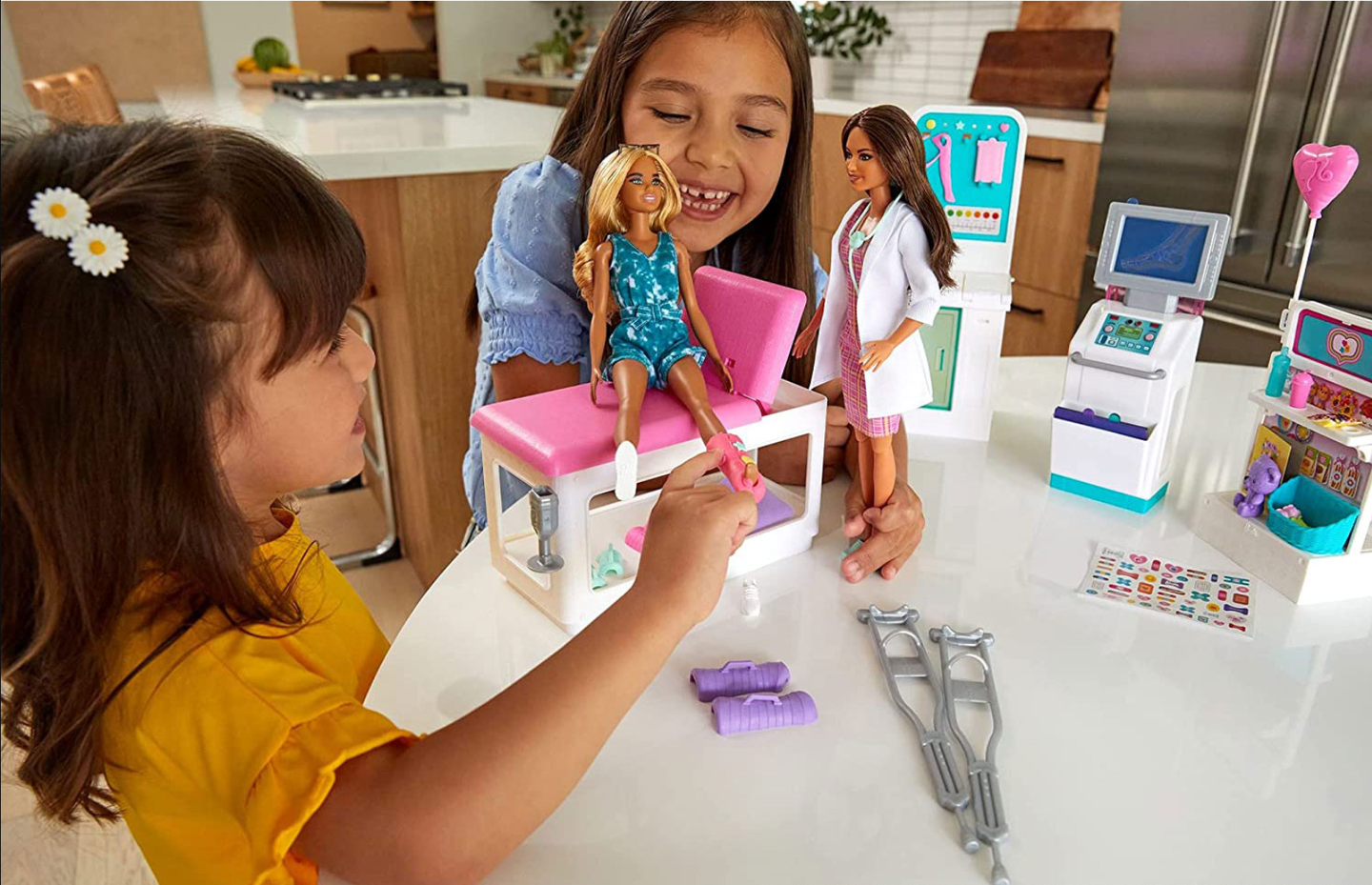Barbie’s medical and scientific impact has room for improvement, study finds
Barbie, the iconic doll that has held countless careers, may need to diversify her medical and scientific roles to promote gender equality

[Dec. 20, 2023: JD Shavit, The Brighter Side of News]
Barbie, the iconic fashion doll that has held countless careers, may need to diversify her medical and scientific roles to promote gender equality. (CREDIT: Creative Commons)
Barbie, the iconic fashion doll that has held countless careers, may need to diversify her medical and scientific roles to promote gender equality, suggests a study recently published in The BMJ's Christmas issue.
The study, conducted by researcher Katherine Klamer, explores the professions portrayed by Barbie dolls and evaluates their professional accuracy, shedding light on the need for greater diversity and safety considerations in these representations.
Throughout her illustrious career, Barbie has worn many hats, figuratively and literally, ranging from a construction worker, teacher, and veterinarian to a judge, scientist, and medical doctor. These diverse roles symbolize the aspirations of young children to pursue various careers. However, this study is the first of its kind to scrutinize the medical and scientific careers represented by Barbie dolls.
Klamer's investigation encompassed 92 Barbie brand career dolls, consisting of 53 doctors, 10 scientists, 2 science educators, 15 nurses, 11 dentists, and 1 paramedic. Additionally, a comparison group of 65 non-Barbie brand career dolls included 26 doctors, 27 scientists, 7 nurses, 2 dentists, 2 engineers, and 1 MRI technician.
Related Stories:
The analysis was conducted between July and November 2023, primarily involving visual examination of clothing, accessories, packaging, and the assessment of personal safety accessories following Indiana University guidelines.
The findings reveal a notable trend in the representation of Barbie brand career dolls. A staggering 98% of them were depicted as adults, 93% as females, and 59% as white individuals, with none of the dolls featuring a visible disability. In contrast, the comparison dolls showed more diversity, with 32% being white and one doll having a prosthetic arm.
One of the striking observations was that the majority of Barbie brand medical professional dolls were shown treating children (66%), while only a mere 4% were depicted working with adult patients. Furthermore, except for three ophthalmologist dolls, most Barbie brand doctor dolls appeared to lack a specific medical specialty, with some being depicted as pediatricians without any apparent subspecialty.
Graphic displays how the range of available Barbies and other dolls has changed over the years. (CREDIT: BMJ)
Barbie dolls were often equipped with various items such as laboratory coats, microscopes, stethoscopes, and glasses. However, the study found that none of the dolls met the professional safety standards for their respective fields. For instance, while 98% of Barbie brand doctor dolls were equipped with stethoscopes, only 4% had face masks, and none had disposable gloves.
Notably, over two-thirds of female medical professional and scientist Barbie dolls were shown with loose hair, and more than half were wearing high-heeled shoes, even in situations where such attire would be discouraged or prohibited for safety reasons. Among the 12 scientist Barbie dolls analyzed, none met all the necessary personal protective equipment requirements related to hair and clothing.
Sex of Barbie brand and comparison dolls. Barbie brand dolls (n=92) were almost all female (93%, n=86/92). The comparison dolls (n=65) were 83% female (n=54/65) and 17% (n=11/65) were male. (CREDIT: BMJ)
Despite some limitations in the study, including the absence of in-depth statistical analysis and the possibility of overlooked dolls, Klamer emphasizes the significance of themed dolls in inspiring future generations of medical professionals and scientists. She calls upon toy companies to create more accurate and professionally diverse representations of medical professional and scientist dolls.
"For young girls' sakes as much as her own, Barbie must keep shattering glass ceilings," Klamer concludes.
In a linked editorial, Sareh Parangi and colleagues, who work in male-dominated surgical fields, echo Klamer's call for greater diversity in Barbie dolls' representations.
They emphasize that female medical students continue to face discouragement from pursuing surgical careers, even at prestigious institutions. Playing with dolls that depict neurosurgeons or trauma surgeons could potentially counteract sexist career assumptions and advice that young girls may encounter.
Jobs of Barbie brand and comparison dolls. The Barbie brand doll group (n=92) was mostly doctors (58%, n=53/92). The comparison doll group (n=65) had more scientists (41%, n=27/65) than did the Barbie brand doll group. (CREDIT: BMJ)
The authors go a step further and express their support for the creation of a surgeon Barbie, offering to advise Mattel, the manufacturer of Barbie dolls, on the accurate accompanying equipment and personal protective gear (PPE) to ensure a realistic and enjoyable representation. They believe that expanding Barbie's line of professions can transform her from an aspirational figure into an inspirational one, particularly in fields where gender disparities persist.
As society strives for greater gender equality in these fields, Barbie's role as an influential childhood toy can be pivotal in shaping young girls' aspirations and breaking down gender barriers. By creating more realistic and diverse representations, Barbie can continue to inspire the next generation of medical professionals and scientists, helping to foster a more inclusive future in these critical fields.
Note: Materials provided above by The Brighter Side of News. Content may be edited for style and length.
Like these kind of feel good stories? Get the Brighter Side of News' newsletter.
Joseph Shavit
Head Science News Writer | Communicating Innovation & Discovery
Based in Los Angeles, Joseph Shavit is an accomplished science journalist, head science news writer and co-founder at The Brighter Side of News, where he translates cutting-edge discoveries into compelling stories for a broad audience. With a strong background spanning science, business, product management, media leadership, and entrepreneurship, Joseph brings a unique perspective to science communication. His expertise allows him to uncover the intersection of technological advancements and market potential, shedding light on how groundbreaking research evolves into transformative products and industries.



